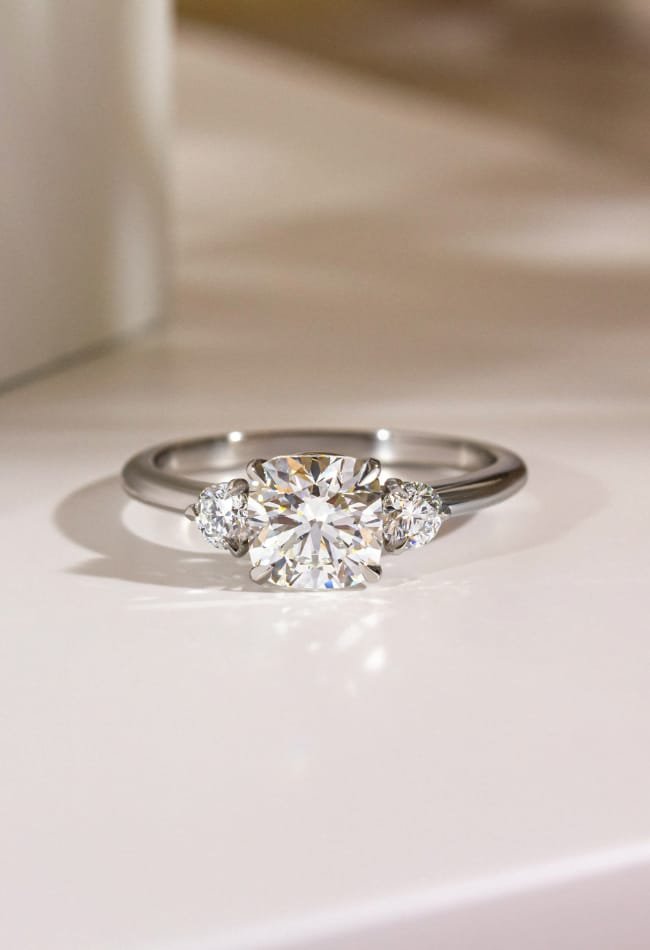Introduction
Lab diamonds are currently the trend against natural ones. What makes them so appealing (besides their ethical and environmental advantages) is that they are both high quality as well as highly affordable. This exhaustive guide will take you through the mystique world of lab-created diamonds – their genesis, advantages and why they are going to be the bright future in the jewelry industry.
What Are Lab Diamonds?
What Are Lab Diamonds? They have the same mineralogical, optical, and physical properties with natural diamonds. Lab diamonds and mined diamonds (often referred to as natural) both possess the same optical, crystallographic and physical properties. The distinction between them is where they are sourced; while natural diamonds take billions of years deep beneath our Earth’s surface, lab grown stones undergo advanced technological extraction that can produce a diamond in as little time within weeks.
How Lab Diamonds are Created
HPHT Method
The HPHT process is replicating the pressures and temperatures that diamonds form under in nature. A tiny diamond seed is placed in carbon, then exposed to extremely high pressures along with temperatures exceeding 2000 degrees Celsius. This causes duplicated carbon atoms to break away from the carrier and affix themselves onto the seed, developing into a larger diamond over time.
CVD Method
For CVD, the diamond seed is put in a chamber where it has been filled with gas rich in carbon. This ionizes the gas such that carbon atoms bond to seed and slowly deposits a diamond layer by layer. This is a process that can be controlled more effectively, which in turn leads to the ability of producing high-quality diamonds on a consistent basis.
Advantages of Lab Diamonds
Ethical and Environmental Considerations
The ethical process of the production is one of biggest pro-peoples factor about lab diamonds. Synthetic diamonds avoid many of the concerns associated with traditional diamond mining, a process that is notorious for damaging the environment and violating human rights. One of the biggest advantages related to lab diamond is, it does not touch mining and hence reduces environmental footprint as well as ensuring chance free except that market.
Cost-Effectiveness
Lab Diamonds are usually priced at a lower price point compared to natural diamonds. They weigh less to produce, and the benefits of this are passed on to customers. Lower pricing would enable more buyers to get involved with top-notch diamonds and be able to do so without compromising on ethics.
Quality and Variety
Lab diamonds come in every color and clarity. Lab diamonds typically have fewer inclusions and defects, as they are grown under controlled conditions. That and they can be made on a larger scale, meaning more options available for consumers.
Lab Diamonds vs Natural Diamonds
Visual and Physical Properties
To the naked eye, it is nearly impossible to tell a lab diamond from its natural counterpart. And also the same brightness, fire and sparkle. Both require advanced tools to tell apart. These diamonds have similar physical properties like hardness and the refractive index of a Diamond.
Certification and Grading
Lab diamonds receive the same grading and certifications as natural counterparts from prestigious gemological laboratories like Gemological Institute of America (GIA) or International Gemological Institute. These certifications detail the cut, color, clarity and certain carat weight of the diamond in order to provide a clear understanding of what you are purchasing (sorta protein label for diamonds).
Popular Uses of Lab Diamonds
Engagement Rings
More and more people wear lab diamond engagement rings because this kind of diamond is friendly-pocket, besides being a conscious choice. Offering a number of cuts and settings, couples enjoy selecting the ring that best communicates their commitment as they embark on this exciting new chapter.
Fashion Jewelry
Lab diamonds are also used heavily in fashion jewelry. Whether it be necklaces and bracelets or earrings or pendants, lab diamonds give the piece that touch of elegance as well as luxury. This makes them cost effective and can lead to elaborate designs that could not be done with natural diamonds because of their high costs.
Industrial Applications
In addition to jewelry, lab diamonds have a number of industrial uses due to their hardness and thermal conductivity. Used in cutting, grinding and drilling tools as well as high performance electronics applications.
Caring for Lab Diamonds
Cleaning and Maintenance
In the case of lab grown diamonds as well, you need to care like real diamonds. Wash with plain water, mild detergent (without bleach or chlorine) and gentle scrub brush And you should be having them cleaned and checked regularly by a professional to make sure the settings are still tight.
Storage
Keep your lab created diamond jewels in a soft pouch or separate lined box when not wearing to avoid scratches and damage[]. This will prevent the pieces from rubbing against other jewelry and getting scratches.
Conclusion
Lab diamond is an amalgamation of science and artwork. Because of their ethically produced and affordable high-quality nature, the jewelry pieces are an appealing decision for lovers of luxury goods as well as eco-friendly minded consumers. Diamond Technology Is Only Going to Get More Sophisticated Lab-Created Diamonds will increasingly occupy space in the market, which suggests great things for this dynamic sector as technology evolves around lab-grown diamonds.











